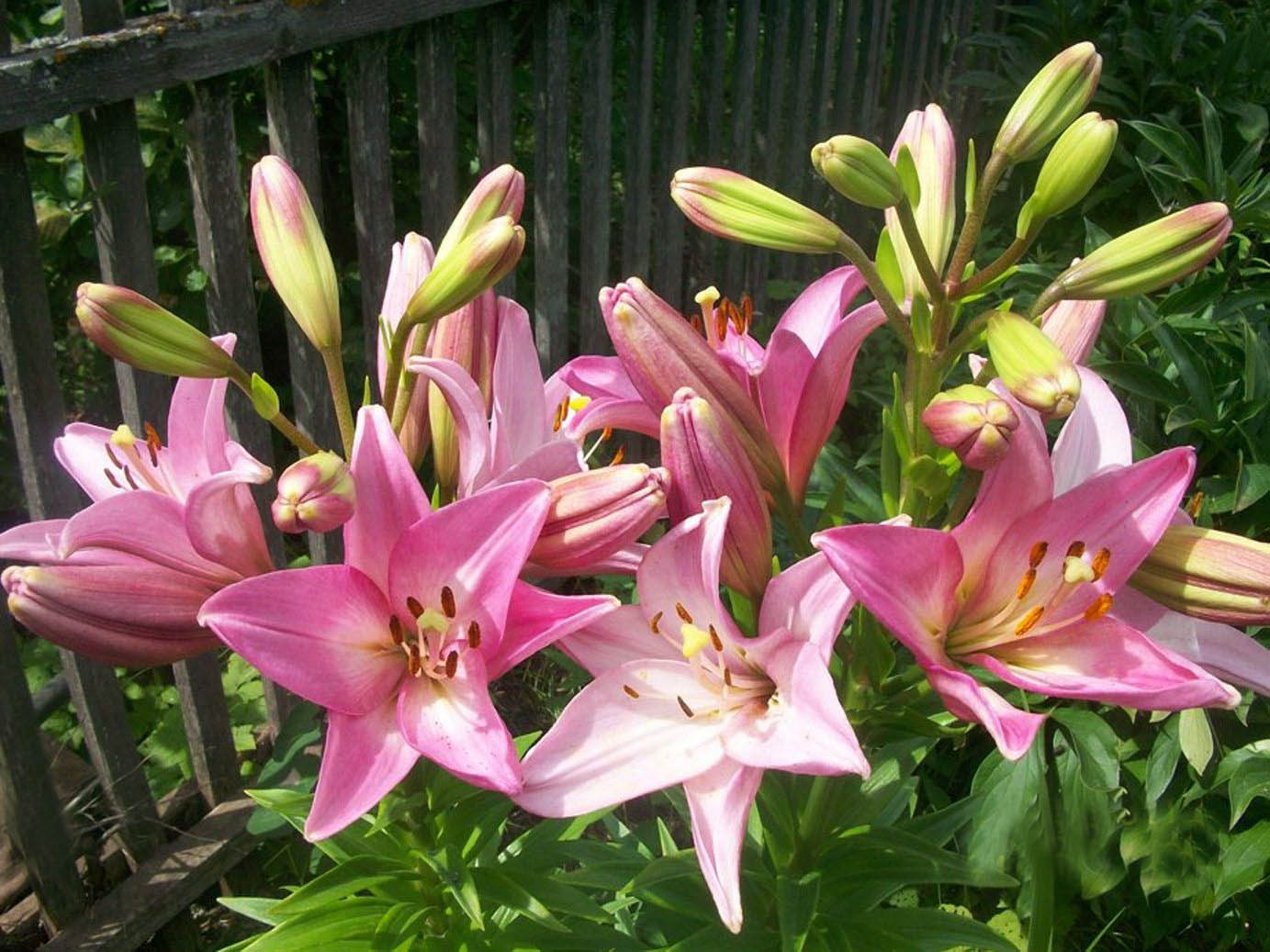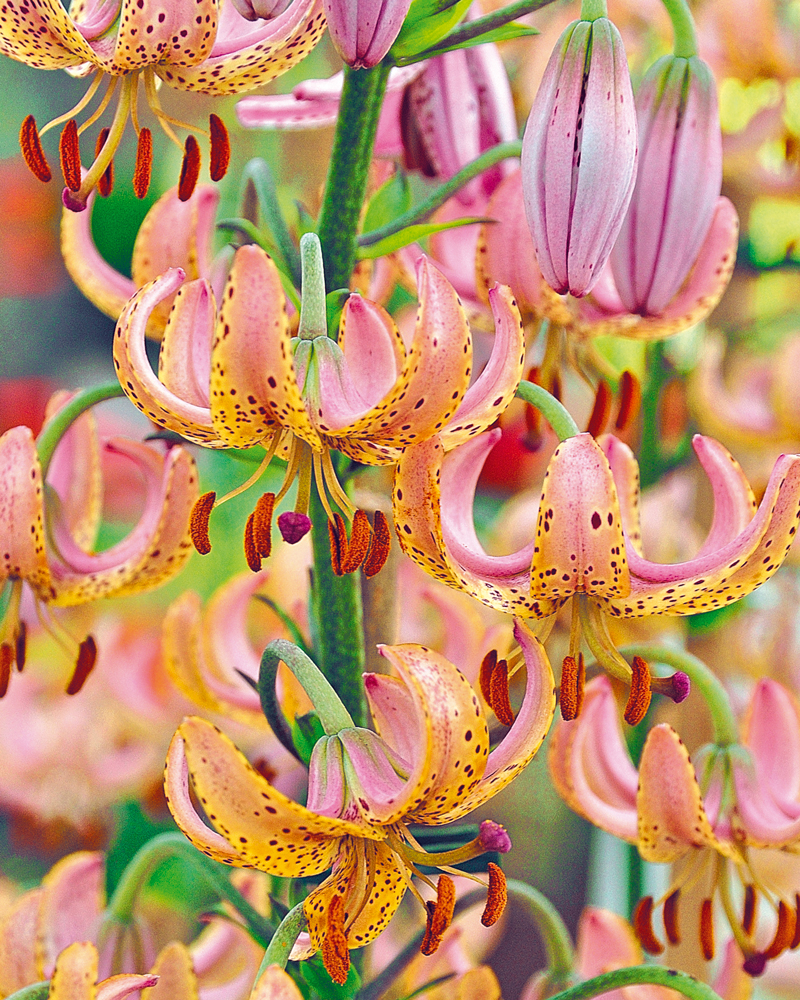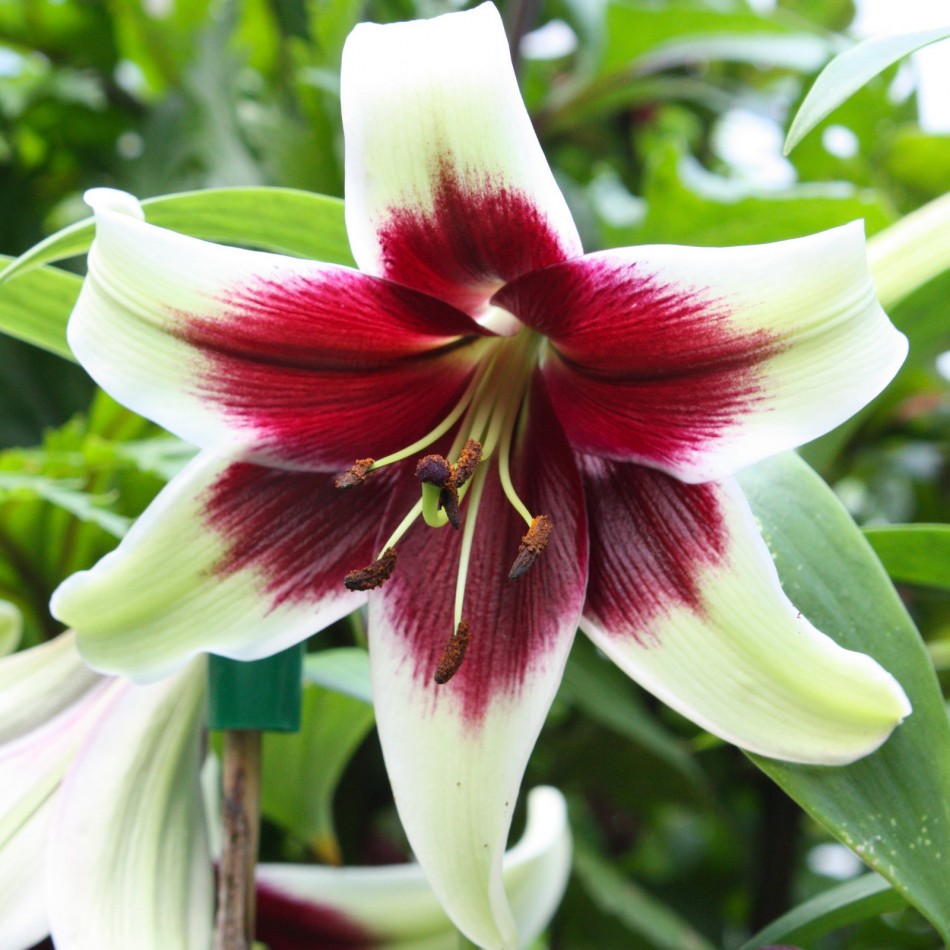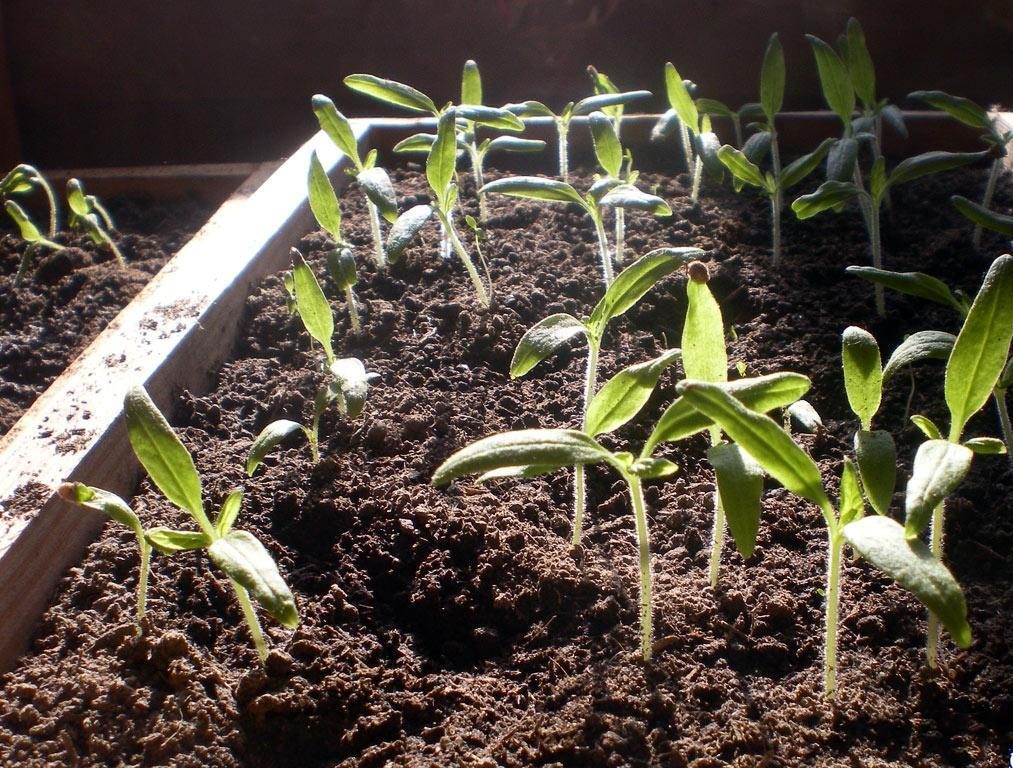Content:
The most beautiful plant of the Liliaceae family is Lílium (name from Latin - garden lily). She is familiar to almost everyone. Further in the article, information on what are garden lily flowers, planting and care, reproduction.
Description
The perennial plant has a bulbous root system that differs in size and shape, with a diameter of 10 cm. Sometimes you can see larger roots reaching 30 cm. The shape is in the form of an oval (ovoid) or ball.
The height of the stems ranges from 1.6 to 2.6 meters, they have an elongated straight appearance.
Many leaves densely cover the entire stem. Their plates are oblong in shape, the tips are pointed. There are varieties with leaves gathering in a rosette at the root. Spiral leaves look more original.
Types of lilies
At the moment, you can count many types of this beautiful plant. Each has its own peculiarities. This applies to the color of the plant, its shape, as well as certain agronomic features.
Asiatic lilies
Characterized by huge white bulbs that can propagate flowers. They grow easily, adapt well to the weather in winter. You can propagate with scales, bulbs. Growth is fast enough, height - from 20 cm to half a meter. The flower shape of the Asiatic lily is in most cases in the form of a bowl or turban. Shades inherent in this species:
- orange;
- blue;
- brown;
- white;
- red;
- cream.
They look interesting in two- and three-color combinations.
Martagon
Martagon is a tall lily variety. Coloring of flowers - pastel, soft pink tones. The plant is resistant to bad weather, pests, diseases. Almost any soil is suitable for cultivation.
Eastern
Unlike the previous species, these plants are very delicate and capricious. Therefore, it is recommended to grow them to experienced gardeners. They are susceptible to diseases, it is difficult to reproduce, they begin to bloom in five to six years. The flowers are flat, have a rolled-up shape, and also come in the form of a bowl, water lily and turban.
Care and cultivation
Lilies are considered to be plants that are undemanding to care for. Despite this, you need to know how to plant lilies in the garden and observe certain conditions in which these plants should be grown. Even a beginner, following all the rules of cultivation, will be able to get a beautiful flower as a result, the aesthetic appearance of which will delight for a long time.
You need to choose a site carefully, seriously. It is undesirable to transplant plants later, they do not like this. In this case, a slowdown in flower growth is possible. It is necessary to choose a place closed from the wind, with good illumination and nutritious soil.
Planting is carried out both in spring and autumn. Planting time largely depends on the variety. Many species are planted in September, the plant will have enough time to grow strong roots. Lilies in this case tolerate temperature changes well in spring. Winter is also going through calmly.
Breeding methods for lilies
Lily can be propagated by bulbs, scales, seeds. How garden lilies reproduce at home:
- Reproduction method by dividing the bulbs. Suitable for 4-5 year old plants.The method is simple: divide the bulbs into parts and plant each of the parts separately. Subject to all the rules of care, a flowering plant is possible in a year.
- Reproduction method using seed pods. You should carefully observe: when the box turns brown, collect the seeds immediately. This is necessary to prevent them from falling out of the boxes. The collected seeds are stored until planting. Storage conditions: low above zero temperature. The maximum shelf life is three to four years.
- Reproduction by scales. Scales in the form of small growths, having a loose structure, are cut. Next, planting takes place in a pre-prepared sand bed, moistened. After a couple of months, bulbs appear. They are planted in the soil.
Read more about how to plant lilies in your garden.
Lily from seeds, features
When propagated with the help of seeds, lilies without changes transfer the characteristics of their species. Flowers sprouted in this way are strong and healthy. In addition, this is the best option for obtaining hybrids in breeding work. The only drawback: you have to wait 3-4 years before you can see the first flowers in full bloom.
Lily seeds ripen in capsules. When they are fully ripe, they are able to fall into the ground and germinate, subject to dampness around. To prevent accidental scattering of seeds, they are collected from the boxes in advance, before they are opened.
The best time to plant seeds is spring.. This must be done in a sandy-leaf mixture. Peat soil with manure is also suitable. You can germinate seeds at home. For this purpose, use any container. When the sprouts appear, it is recommended to lower the temperature to 12–20 ° C. Timely watering is required. In no case should the soil be overdried.
An excellent time to land on open ground is the first summer month. By this time, the sprouts will be of sufficient size. The planting site is chosen carefully, given that the flowers do not tolerate transplantation well - growth may slow down.
Lily: planting a bulb
First of all, you need to choose the right bulbs. They must be healthy and free from damage.
When it is required to keep the bulbs for a certain time before planting, certain conditions must be met.
Storage rules:
- The bulb storage container must not be dry. Otherwise, they will just wrinkle.
- If the storage is low humidity, there is a possibility of germination or mold coverage.
- A prerequisite is the temperature within + 5 + 10 degrees.
- Ventilation is also necessary.
If the above conditions are met, the bulbs can be stored until the time of planting.
Planting of bulbs is possible either in autumn or spring. You need to choose the time, focusing on the variety of lilies. According to most gardeners, the best time is autumn. Small-sized bulbs are placed at a depth of 5 cm, large ones - 16 cm. Fertilizer is immediately applied to the soil.
Lily: how to care outdoors
To grow a lily in the garden, you need to water and fertilize the plant on time. The roots love shade, and the tops love the sun. For harmonious lighting, several more plants should be planted nearby, covering the root system of the lines, creating a shadow for it.
Particular attention should be paid to watering during drought. It is necessary to observe the measure so as not to overflow the flower. Reduce watering during rains. Both too dry soil and very wet soil can harm the plant.
Lilies are popular with gardeners. It is easy to grow them, both experienced gardeners and beginners can do it.
















